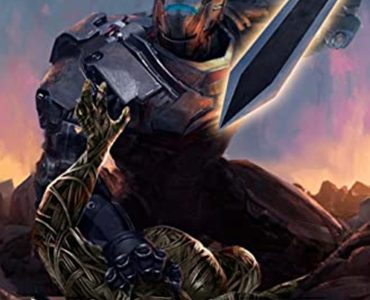Pros
- Narrator and perspective are not very common for science fiction stories
- Some interesting exploration of science fiction topics like artificial intelligence
- Atmosphere and mood of the story is consistent and melancholic
Cons
- Can feel a little slow at times since there isn’t much (if any) action to drive the story
- Perspective of the story makes the main conflict seem less urgent
Klara and the Sun Review
Klara and the Sun by Kazuo Ishiguro is a melancholic story about a society in the not-too-distant future that seems almost plausible. What stands out the most is Klara, the narrator of the story, and her growth and observations throughout—readers get a glimpse of the dystopic society through the eyes of a naive storyteller.
That Klara is an AF, or Artificial Friend, reveals a lot about the society readers find themselves learning about. And that the AFs are almost as common as smartphones are to people today implies that there’s a serious affliction plaguing the people in that world, and that affliction is the absence of genuine relationships and communication. Thus the need for constant development of realistic artificial intelligences created and sold to children in order for them to have companion with whom to develop social skills.
Having an AI as a storyteller isn’t necessarily new to the science fiction world. Ancillary Justice by Ann Leckie, the Culture series by Iain Banks, and Aurora by Kim Stanley Robinson all come to mind. Whereas these novels contain super intelligences managing enormous, sometimes city-sized ships, Klara’s artificial intelligence is just a newborn by comparison. That makes the narrative voice both refreshing and sometimes frustrating for its lack of focus and detail on observations she makes about her world.
Little is discussed about Josie, who purchases Klara. Josie’s failure to show up and purchase Klara at the beginning of the story hints at the heart of the conflict for the story. That conflict is never really explored except for its consequences on the family dynamics and on Klara’s purpose. The result is that Klara and readers are introduced to a family that is falling apart because of Josie’s condition; that is, Josie’s deterioration mimics that of the family unit, already suffering from a family dealing with grief from a divorce and other barely-mentioned tragedy.
Other aspects of the world where Klara finds herself in are fascinating, yet little information is forthcoming from the writer or even from Klara, who lacks the programming to learn (and share) information about the world that would be interesting. So those bitts of information casually mentioned offhand, like mentions of the father’s community, remain frustratingly unexplained. Gaps such as these abound in the story, but true to the perspective, the reader’s knowledge and view of the world is just as limited as Klara’s own surroundings.
At its core, Klara and the Sun by Kazuo Ishiguro is a story about managing in a society that has advanced too quickly, leaving the emotional well-being of its people behind. Josie, and other children of affluent families, are all “uplifted” in order to provide them with the best opportunities to succeed in life. So it’s easy to disregard ideas like hope in favor of something more tangible to aid in success: money, education, intelligence, or even an Artificial Friend to help with socio emotional development.
Thrown into this dystopic society is an Artificial Friend, who itself is struggling to find an identity—possibly even having one forced upon it—in a world that has perhaps lost a part of what it means to be human. It takes an artificial intelligence in the form of a human to rediscover hope and to share with her family.
Read reviews of other science fiction books with similar themes.



